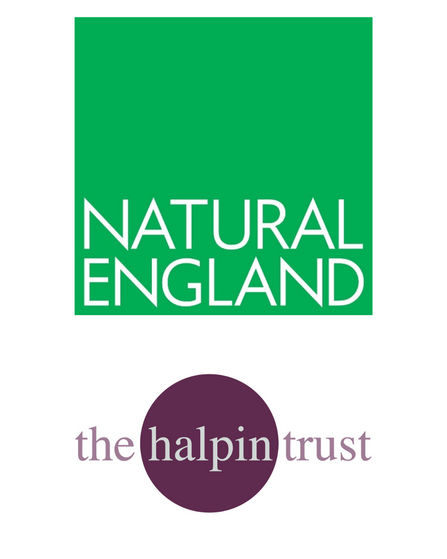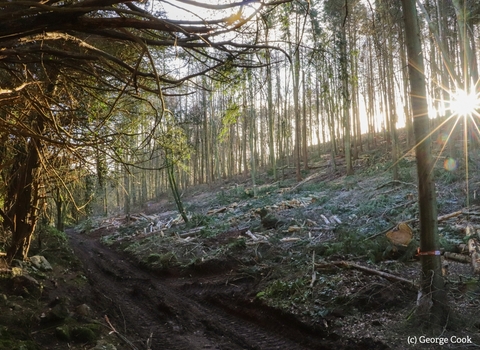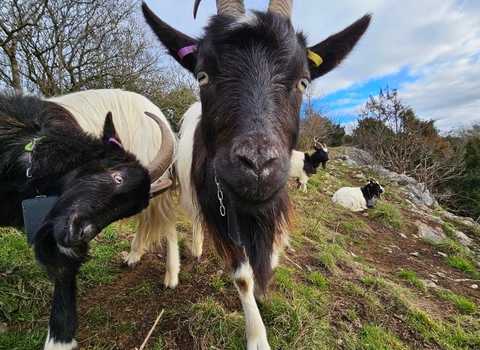Woodland regeneration in North Somerset
Our Wilder Woodlands regeneration project in North Somerset has recently concluded with some truly amazing results.
Funded by Natural England’s Species Recovery Programme and the Halpin Trust, the project focused on improving the habitat, increasing climate resilience, and boosting biodiversity across the landscape, especially for species such as lesser and greater horseshoe bats, barbastelle bats, and dormice.
Transforming a former plantation woodland
Historically, the woodland at Goblin Combe was created as a ‘tree crop’ for timber. The trees in this plantation woodland were planted very close together to ensure maximum timber production. This forced the trees to grow straight up due to the tight spacing, competition and lack of light.
Although good for producing straight timber, dense woodland is not good for wildlife and biodiversity. The lack of light on the forest floor means no understorey develops beneath the tree canopy. Without this, there is less shelter and food for many species of invertebrates, birds and mammals. The uniform straight trees, all of the same age, don’t provide the cracks, nooks and crannies for roosting bats or nesting birds. Plantation woodland is also poorer in tree diversity than a natural woodland.
The Wilder Woodlands project set out to change this.
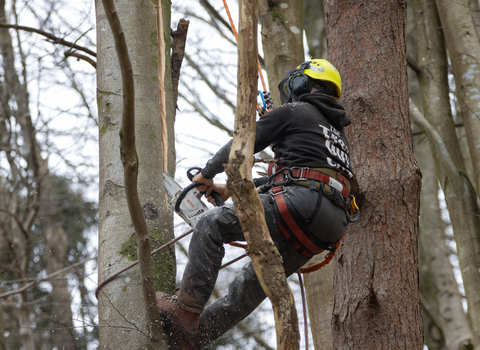
(c) George Cook
Boosting biodiversity
Fifty trees were veteranised in a process that involves deliberate, managed damage of younger trees to create microhabitats for invertebrates, birds, and for bats to roost.
Thinning of trees promoted a more diverse woodland. The extra light and space results in larger, more interesting trees that will lock in more carbon in their trunks and roots.
Trees with potential roosting features for bats and wildlife were protected. The understorey will now develop, providing more structure and a new generation of trees and nesting opportunities for wildlife whilst vastly increasing food sources like fruits, nuts, and nectar.
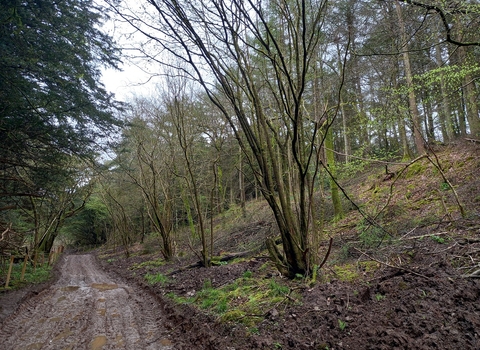
(c) Hannah Batchelor
Letting in light
More than 1,700 metres of woodland rides were created to bring light into the woodland floor.
A further 750 metres of rides were improved through tree felling, coppicing, and the planting of more than 850 new trees and shrubs.
Increasing the number of tree species in the woodland provides future disease resilience. Woodlands with fewer tree species are more vulnerable during disease outbreaks as we have seen with ash dieback across the country.
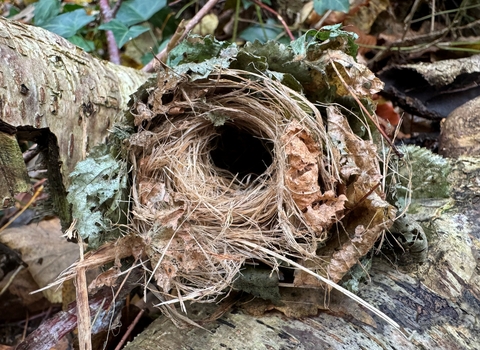
(c) Hannah Batchelor
Species highlights
Surveying of dormice has confirmed their presence across the whole project area.
There is also great news for our key bat species, with bat detectors recording 3,360 lesser horseshoe passes, 2,177 greater horseshoe passes, and 371 barbastelle passes.
A small number of cattle and heritage goats have been introduced to aid habitat improvements and increase floral diversity. In turn, this will boost invertebrate populations and provide a good source of food for bats and birds.
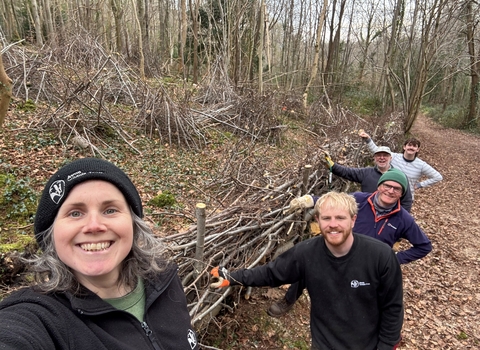
(c) Hannah Batchelor
Volunteer impact
Support from volunteers was significant with more than 1,200 volunteer hours recorded.
This included weekly coppicing sessions with new tools and training to provide future capacity for the tasks to continue.
"For decades, new trees have been planted in patterns that we don’t see in nature. We call this plantation planting, where trees have been planted like crops. These uniform woodlands – where trees grow too close together – don’t support a diverse range of wildlife. Smaller trees and shrubs support many woodland specialists – such as the endangered marsh tit, which has declined by 80% since the 1960s – that rely on for food and shelter simply don’t grow where the canopy blocks out the light."Head of Nature Reserves, Avon Wildlife Trust
With thanks to our funders
Wilder Woodlands is funded by the Natural England Species Recovery Programme Capital Grant Scheme and The Halpin Trust
